-
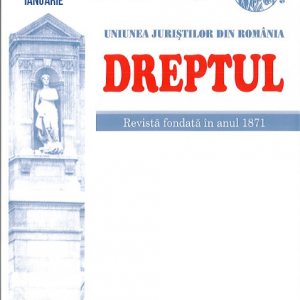 The concept of complex offence is not defined by law, excepting a few European legal systems, such as, for instance, the Romanian and Italian legislation. In the majority of legislations, the term complex offence is approached only by the specialty literature, like the cases of German, Spanish or French law. Non-regulation of the institution of complex offence through a legal provision has however resulted in an uncertainty with respect to its content, as the authors have different opinions regarding this matter.
The concept of complex offence is not defined by law, excepting a few European legal systems, such as, for instance, the Romanian and Italian legislation. In the majority of legislations, the term complex offence is approached only by the specialty literature, like the cases of German, Spanish or French law. Non-regulation of the institution of complex offence through a legal provision has however resulted in an uncertainty with respect to its content, as the authors have different opinions regarding this matter. -
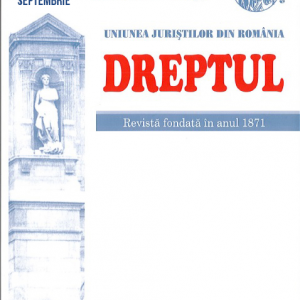 Almost 8 years after 1 February 2014, the day when the current Criminal Code entered into force, it seems to be a useful step to analyze how the principles of Romanian criminal law are reflected in this Code. Following the examination, we will find that some of the principles enjoy express consecration, such as the legality of incrimination or the legality of the criminal law sanctions, and others have different applications in the body of the Criminal Code or are deduced from the economy of the criminal provisions. In the present paper we will review the doctrinal conceptions regarding the principles of the criminal law and the way in which they are reflected in the current Criminal Code.
Almost 8 years after 1 February 2014, the day when the current Criminal Code entered into force, it seems to be a useful step to analyze how the principles of Romanian criminal law are reflected in this Code. Following the examination, we will find that some of the principles enjoy express consecration, such as the legality of incrimination or the legality of the criminal law sanctions, and others have different applications in the body of the Criminal Code or are deduced from the economy of the criminal provisions. In the present paper we will review the doctrinal conceptions regarding the principles of the criminal law and the way in which they are reflected in the current Criminal Code. -
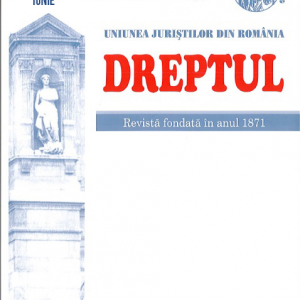 Although the science and the practice of law have always enjoyed the consideration and the appreciation of society, their academic recognition remained, mostly, a desideratum. As a complex phenomenon: art, technics and science at the same time, the law represents complexity and difficulty in perceiving and affirming its status of scientific and cultural science. That is why, although the faculties of law were among the founding faculties of universities, the lawyers and their discipline came relatively late in the dome of academies. In Romania, the Romanian Academy, created in 1866, was initially concerned with the study of the national language and history, hardly opening its doors for sciences, in general, and social sciences, in particular. Facing this „conservatorism” the representatives of different sciences have opted to create some specialized academies, such as the Academy of Sciences (1936) or the Academy (Institute) of Moral and Political Sciences (1938). It was only in 1948, by creating the Division of legal and economic sciences, when the law received express recognition among the concerns of the high academic forum, but the lawyers are still under-represented within it. The increasing role of law in post-modern society and asserting its status as social complex science impose the revaluation of its academic status as well.
Although the science and the practice of law have always enjoyed the consideration and the appreciation of society, their academic recognition remained, mostly, a desideratum. As a complex phenomenon: art, technics and science at the same time, the law represents complexity and difficulty in perceiving and affirming its status of scientific and cultural science. That is why, although the faculties of law were among the founding faculties of universities, the lawyers and their discipline came relatively late in the dome of academies. In Romania, the Romanian Academy, created in 1866, was initially concerned with the study of the national language and history, hardly opening its doors for sciences, in general, and social sciences, in particular. Facing this „conservatorism” the representatives of different sciences have opted to create some specialized academies, such as the Academy of Sciences (1936) or the Academy (Institute) of Moral and Political Sciences (1938). It was only in 1948, by creating the Division of legal and economic sciences, when the law received express recognition among the concerns of the high academic forum, but the lawyers are still under-represented within it. The increasing role of law in post-modern society and asserting its status as social complex science impose the revaluation of its academic status as well. -
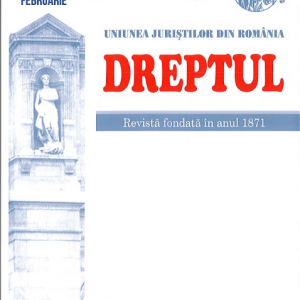 The codification is not only the expression of the political will of the legislator, but mainly a complex judicial technique of selecting and adjusting the normative content needed and adequate for a certain social, political, economic or institutional reality. As the constitution is a law, but it is rather differentiated from a law, the question to be raised shall consist in deciding what kind of legal rules it comprises. The settlement of this problem has to take into consideration the specificity of the fundamental law, but also the requirements of the codification theory. The establishment of the normative content of the constitution with all scientific rigor shall be indispensable, both for the removal of the inaccuracy as regards the determination of the differences from the law, for the stability and predictability of the basic law and last but not least for the reality and effectiveness of its supremacy. This study carries out an analysis of the techniques and requirements of selecting and adjusting the constitutional rules depending on the comparative criteria, referring to their specificity, to the practice of other states and within the historical background.
The codification is not only the expression of the political will of the legislator, but mainly a complex judicial technique of selecting and adjusting the normative content needed and adequate for a certain social, political, economic or institutional reality. As the constitution is a law, but it is rather differentiated from a law, the question to be raised shall consist in deciding what kind of legal rules it comprises. The settlement of this problem has to take into consideration the specificity of the fundamental law, but also the requirements of the codification theory. The establishment of the normative content of the constitution with all scientific rigor shall be indispensable, both for the removal of the inaccuracy as regards the determination of the differences from the law, for the stability and predictability of the basic law and last but not least for the reality and effectiveness of its supremacy. This study carries out an analysis of the techniques and requirements of selecting and adjusting the constitutional rules depending on the comparative criteria, referring to their specificity, to the practice of other states and within the historical background. -
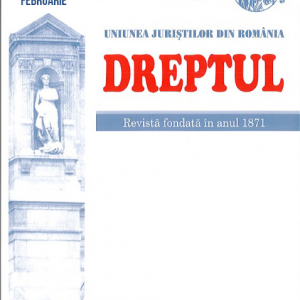 In the research hereby, the author considers that in determining the amount of pension for retired judges between July 3rd, 2010 and December 31st, 2010, one should consider compensation in the amount admitted for the magistrate (judge or prosecutor) by Framework Law no. 330/2009, and not the one diminished by 25% (according to Law no. 118/2010 on certain measures requisite to restore budgetary balance), as the latter had temporary character (July 3rd to December 31st, 2010) and by the aforementioned Law there was no readmission of the magistrate (as accomplished since January 1st, 2010, under the Framework Law no. 330/2009).
In the research hereby, the author considers that in determining the amount of pension for retired judges between July 3rd, 2010 and December 31st, 2010, one should consider compensation in the amount admitted for the magistrate (judge or prosecutor) by Framework Law no. 330/2009, and not the one diminished by 25% (according to Law no. 118/2010 on certain measures requisite to restore budgetary balance), as the latter had temporary character (July 3rd to December 31st, 2010) and by the aforementioned Law there was no readmission of the magistrate (as accomplished since January 1st, 2010, under the Framework Law no. 330/2009). -
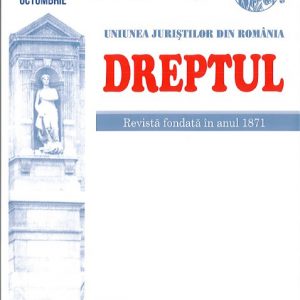 In the situation that a person has been sanctioned by an administrative authority for committing a contravention, this person can no longer be subsequently prosecuted for the same deed contemplated in its materiality, whereas, in this situation it is applicable the ne bis in idem principle which determines, from the perspective of the criminal procedural law, the incidence of the case provided by Article 16 (1) i) of the Criminal Procedure Code, with reference to the authority of res judicata, which prevents the exercise of the criminal action against that person.
In the situation that a person has been sanctioned by an administrative authority for committing a contravention, this person can no longer be subsequently prosecuted for the same deed contemplated in its materiality, whereas, in this situation it is applicable the ne bis in idem principle which determines, from the perspective of the criminal procedural law, the incidence of the case provided by Article 16 (1) i) of the Criminal Procedure Code, with reference to the authority of res judicata, which prevents the exercise of the criminal action against that person. -
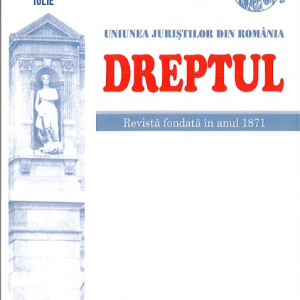 In this study, the authors intend to examine the institution of international liability, dealing with the issue of the constitutive elements of international liability. In the general international law, liability is a relationship created exclusively between two or several international law subjects. The international liability of a state can only be raised by another international law subject whose international right was infringed. If a state suffers a direct damage (immediate), it can approach the liable state directly in order to obtain the repair. On the contrary, the damage suffered by an individual following the infringement of the international right shall not provide the victim with the right to obtain recovery of damages before the international courts. A state shall only be liable internationally if it is the author of an international tort. There is a tort of the state when: a) a behavior consisting of an action or omission can be assigned (attributed), in compliance with the international law, to the state; b) this behavior represents an infringement of an international obligation of the state. The international doctrine generally acknowledges that the occurrence of these two elements generates the international liability of the state.
In this study, the authors intend to examine the institution of international liability, dealing with the issue of the constitutive elements of international liability. In the general international law, liability is a relationship created exclusively between two or several international law subjects. The international liability of a state can only be raised by another international law subject whose international right was infringed. If a state suffers a direct damage (immediate), it can approach the liable state directly in order to obtain the repair. On the contrary, the damage suffered by an individual following the infringement of the international right shall not provide the victim with the right to obtain recovery of damages before the international courts. A state shall only be liable internationally if it is the author of an international tort. There is a tort of the state when: a) a behavior consisting of an action or omission can be assigned (attributed), in compliance with the international law, to the state; b) this behavior represents an infringement of an international obligation of the state. The international doctrine generally acknowledges that the occurrence of these two elements generates the international liability of the state. -
 The study approaches the issue of the recrimination of the offence of usury according to the new Romanian Criminal Code. The author examines the criminal, contravention and civil involvements of lending money on interest and emphasizes the part that the National Bank of Romania has for authorizing the persons entitled to lend money on interest.
The study approaches the issue of the recrimination of the offence of usury according to the new Romanian Criminal Code. The author examines the criminal, contravention and civil involvements of lending money on interest and emphasizes the part that the National Bank of Romania has for authorizing the persons entitled to lend money on interest. -
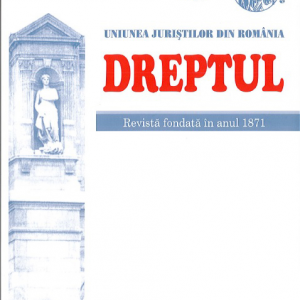 In the first part of the study, the author emphasizes the importance of the legal remedies for making justice more efficient, one of the important objectives of any reform programme in the field. The finding is natural, since a good regulation of the legal remedies can make a substantial contribution to the resolution of the trials within a reasonable time, in order to use only a unanimously accepted phrase. The general tendency of the contemporary procedural regulations is to carry out a simplification of the legal remedies and to avoid congestion of the courts, especially the courts of appeal and the supreme courts. For this purpose, the vast majority of the analyzed regulations establish some limitations – value-wise – of the exercise of the legal remedies or establish means of filtering the reviews, and in some countries even of the appeals. The author also notes that in some procedural systems the ordinary legal remedy of the appeal cannot be exercised in low value disputes. One of the author’s conclusive remarks is that the filtering systems of some legal remedies are efficient and contribute to the resolution of processes with celerity. Another final conclusion is that the Romanian legislator has abandoned such an approach, and this should be reconsidered in the future.
In the first part of the study, the author emphasizes the importance of the legal remedies for making justice more efficient, one of the important objectives of any reform programme in the field. The finding is natural, since a good regulation of the legal remedies can make a substantial contribution to the resolution of the trials within a reasonable time, in order to use only a unanimously accepted phrase. The general tendency of the contemporary procedural regulations is to carry out a simplification of the legal remedies and to avoid congestion of the courts, especially the courts of appeal and the supreme courts. For this purpose, the vast majority of the analyzed regulations establish some limitations – value-wise – of the exercise of the legal remedies or establish means of filtering the reviews, and in some countries even of the appeals. The author also notes that in some procedural systems the ordinary legal remedy of the appeal cannot be exercised in low value disputes. One of the author’s conclusive remarks is that the filtering systems of some legal remedies are efficient and contribute to the resolution of processes with celerity. Another final conclusion is that the Romanian legislator has abandoned such an approach, and this should be reconsidered in the future. -
 This article addresses the issues represented by the content and conduct of criminal proceedings, naturally framed in certain coordinates which, due to their combination and their complexity serve to develop a criminal trial theory, which is based on the following constants: the nature of the criminal trial, the object of the criminal trial, systematization of criminal trial, criminal trial subjects and criminal procedural relations.
This article addresses the issues represented by the content and conduct of criminal proceedings, naturally framed in certain coordinates which, due to their combination and their complexity serve to develop a criminal trial theory, which is based on the following constants: the nature of the criminal trial, the object of the criminal trial, systematization of criminal trial, criminal trial subjects and criminal procedural relations. -
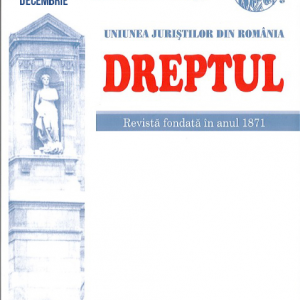 Ce înseamnã pentru noi unificarea dreptului privat operatã de noul Cod civil? O simplã juxtapunere a normelor civile şi comerciale într-un singur instrument legislativ? O comasare mecanicã sub o etichetã unicã? Noi ne-am ferit sã procedãm astfel şi am încercat o fuziune a dreptului civil şi a celui comercial. În primul rând, am aşezat aceleaşi principii la baza tuturor materiilor. Libertatea de a dispune, buna-credinþã, sancţionarea abuzului de drept se regãsesc în materia familiei, bunurilor, obligaţiilor. Regulile generale de la obligaţii se dezvoltã şi la contractele speciale, ipoteci etc.
Ce înseamnã pentru noi unificarea dreptului privat operatã de noul Cod civil? O simplã juxtapunere a normelor civile şi comerciale într-un singur instrument legislativ? O comasare mecanicã sub o etichetã unicã? Noi ne-am ferit sã procedãm astfel şi am încercat o fuziune a dreptului civil şi a celui comercial. În primul rând, am aşezat aceleaşi principii la baza tuturor materiilor. Libertatea de a dispune, buna-credinþã, sancţionarea abuzului de drept se regãsesc în materia familiei, bunurilor, obligaţiilor. Regulile generale de la obligaţii se dezvoltã şi la contractele speciale, ipoteci etc. -
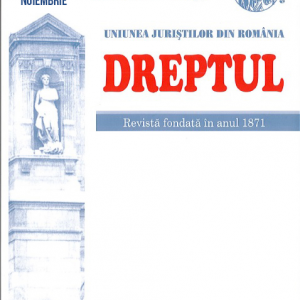 The non-unitary practice of some courts and public prosecutor’s offices in the district of the Court of Appeal of Oradea, generated by the different interpretation of some legal provisions in the criminal and criminal processual matters, gives the author the opportunity for some comments and de lege ferenda proposals. This study deals with the controversial aspects referring to the following institutions of criminal law and of criminal processual law: the jurisdiction of the judge of rights and freedoms in the matter of preventive measures in case of joining some cases; the complex offence or the formal concurrence of offences in case of committing some acts of outrage or judiciary outrage; the solutions of the preliminary chamber; the territorial jurisdiction of the criminal prosecution bodies under the terms of unique referrals; the concurrence of qualifications (of texts, of rules) or ideal concurrence of offences; the legal nature of the institutions of waiver of application of the punishment and the postponement of the application of punishment.
The non-unitary practice of some courts and public prosecutor’s offices in the district of the Court of Appeal of Oradea, generated by the different interpretation of some legal provisions in the criminal and criminal processual matters, gives the author the opportunity for some comments and de lege ferenda proposals. This study deals with the controversial aspects referring to the following institutions of criminal law and of criminal processual law: the jurisdiction of the judge of rights and freedoms in the matter of preventive measures in case of joining some cases; the complex offence or the formal concurrence of offences in case of committing some acts of outrage or judiciary outrage; the solutions of the preliminary chamber; the territorial jurisdiction of the criminal prosecution bodies under the terms of unique referrals; the concurrence of qualifications (of texts, of rules) or ideal concurrence of offences; the legal nature of the institutions of waiver of application of the punishment and the postponement of the application of punishment. -
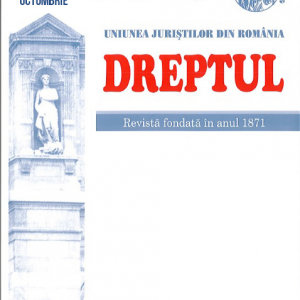 The paper deals with the issue of using hypnosis techniques in crime investigations. The author examines the criminal procedure implications of using such a forensic technique with reference to national legislation and the EU regulations, not avoiding to examine the controversial aspects in the legal literature and jurisprudence; however, the author concludes that the expertise would seem more appropriate to allow the use of hypnosis technique, provided that a clear distinction between hearing a person under hypnosis and the expertise of its discourse under hypnosis is achieved.
The paper deals with the issue of using hypnosis techniques in crime investigations. The author examines the criminal procedure implications of using such a forensic technique with reference to national legislation and the EU regulations, not avoiding to examine the controversial aspects in the legal literature and jurisprudence; however, the author concludes that the expertise would seem more appropriate to allow the use of hypnosis technique, provided that a clear distinction between hearing a person under hypnosis and the expertise of its discourse under hypnosis is achieved. -
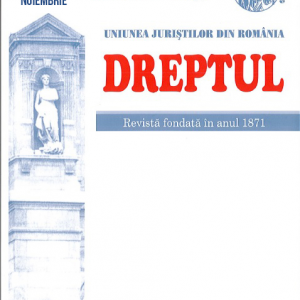 This study subjects to our attention brief critical reflections on the provisions of the new Civil Code in matters of seizin. Appeared as an institution that had served the transmission of the property right from the deceased to his legal heirs, evolving as an institution that had served the possession of property in the inheritance, the seizin was taken over by the Romanian Civil Code of 1864 in a truncated manner from the French Civil Code, which gave rise to a confusing legal regime, constantly criticized in the doctrine in point of content, effects and scope of application thereof. Although the Romanian legislator had the opportunity to complete the field of application and to define by law the notion of seizin by the reform of the civil law occurred in 2011, it has regulated the seizin so that, at least for reasons of terminology, the author considers that the legal texts are still open for improvement, being susceptible of non-application or generating confusions in the current wording.
This study subjects to our attention brief critical reflections on the provisions of the new Civil Code in matters of seizin. Appeared as an institution that had served the transmission of the property right from the deceased to his legal heirs, evolving as an institution that had served the possession of property in the inheritance, the seizin was taken over by the Romanian Civil Code of 1864 in a truncated manner from the French Civil Code, which gave rise to a confusing legal regime, constantly criticized in the doctrine in point of content, effects and scope of application thereof. Although the Romanian legislator had the opportunity to complete the field of application and to define by law the notion of seizin by the reform of the civil law occurred in 2011, it has regulated the seizin so that, at least for reasons of terminology, the author considers that the legal texts are still open for improvement, being susceptible of non-application or generating confusions in the current wording. -
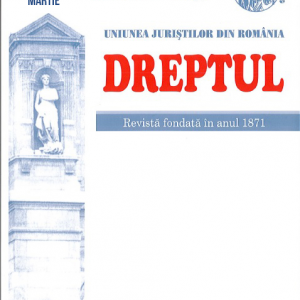 The author strongly criticizes the regulation stated in art. 519 to 521 of the new (Romanian) Code of Civil Procedure (referral to the High Court of Cassation and Justice for a prior ruling for dispensation of law issues), considering, reasoned, that these texts should be expressly repealed so that, also in the case covered by art. 519, an appeal in the interest of law can be filed (Articles 514 to 518 of the same code).
The author strongly criticizes the regulation stated in art. 519 to 521 of the new (Romanian) Code of Civil Procedure (referral to the High Court of Cassation and Justice for a prior ruling for dispensation of law issues), considering, reasoned, that these texts should be expressly repealed so that, also in the case covered by art. 519, an appeal in the interest of law can be filed (Articles 514 to 518 of the same code). -
 This study analyzes the regulations pertaining to causes of revocation of donations, regulations which entered into force at the same time with the implementation of Law No 287/2009 on the new Civil Code. The starting point of this paper is the fact that donations and liberalities have been under the influence of special legal regimes, different from those of onerous legal documents. Even though donations are, in principle, irrevocable legal acts, the legislator has instituted special cases of revocation thereof, in order to avoid or limit prodigality acts and undesired effects on the interests of the donor or of the persons close to this donor. It was particularly on these causes of revocation of donations that the author focused his scientific endeavour, by analyzing doctrine and case-law and by formulating his own opinions and de lege ferenda proposals, so that legal rules in the examined area be harmonized with the public order interests. The study also relates to the new criminal regulations (the new Criminal Code) as regards the criminal acts of revocation of donations for ingratitude.
This study analyzes the regulations pertaining to causes of revocation of donations, regulations which entered into force at the same time with the implementation of Law No 287/2009 on the new Civil Code. The starting point of this paper is the fact that donations and liberalities have been under the influence of special legal regimes, different from those of onerous legal documents. Even though donations are, in principle, irrevocable legal acts, the legislator has instituted special cases of revocation thereof, in order to avoid or limit prodigality acts and undesired effects on the interests of the donor or of the persons close to this donor. It was particularly on these causes of revocation of donations that the author focused his scientific endeavour, by analyzing doctrine and case-law and by formulating his own opinions and de lege ferenda proposals, so that legal rules in the examined area be harmonized with the public order interests. The study also relates to the new criminal regulations (the new Criminal Code) as regards the criminal acts of revocation of donations for ingratitude. -
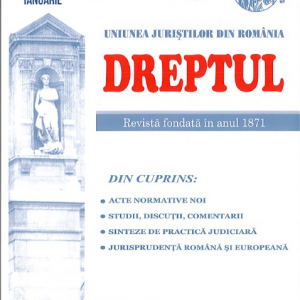 Analiza problematicii invocate în titlu vizează atât considerentele, cât, mai ales, dispozitivul Deciziei Înaltei Curți de Casație și Justiție nr. 52/20181, pronunțată de instanța supremă în complet constituit pentru dezlegarea unor chestiuni de drept și care vizează interpretarea și aplicarea dispozițiilor art. 27 din Codul de procedură civilă. În concret, Înalta Curte a statuat următoarele: „În interpretarea și aplicarea dispozițiilor art. 27 C.pr.civ., cu referire la articolul 147 alin. (4) din Constituția României, efectele Deciziei Curții Constituționale nr. 369 din 30 mai 2017 se produc cu privire la hotărârile judecătorești pronunțate după publicarea acesteia în Monitorul Oficial al României, în litigiile evaluabile în bani de până la 1.000.000 lei inclusiv, pornite ulterior publicării Deciziei (20 iulie 2017)”.
Analiza problematicii invocate în titlu vizează atât considerentele, cât, mai ales, dispozitivul Deciziei Înaltei Curți de Casație și Justiție nr. 52/20181, pronunțată de instanța supremă în complet constituit pentru dezlegarea unor chestiuni de drept și care vizează interpretarea și aplicarea dispozițiilor art. 27 din Codul de procedură civilă. În concret, Înalta Curte a statuat următoarele: „În interpretarea și aplicarea dispozițiilor art. 27 C.pr.civ., cu referire la articolul 147 alin. (4) din Constituția României, efectele Deciziei Curții Constituționale nr. 369 din 30 mai 2017 se produc cu privire la hotărârile judecătorești pronunțate după publicarea acesteia în Monitorul Oficial al României, în litigiile evaluabile în bani de până la 1.000.000 lei inclusiv, pornite ulterior publicării Deciziei (20 iulie 2017)”. -
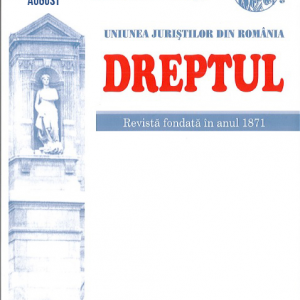 In this study, the author comments on a Resolution passed in 2010 by the High Court of Cassation and Justice (Joint Sections), issued following an appeal promoted in the interest of the law and argues that, in contravention law, the principle of nulla poena sine lege is fully justified, both in general, and when the alternative sentencing for the main penalty of fine is performing community service.
In this study, the author comments on a Resolution passed in 2010 by the High Court of Cassation and Justice (Joint Sections), issued following an appeal promoted in the interest of the law and argues that, in contravention law, the principle of nulla poena sine lege is fully justified, both in general, and when the alternative sentencing for the main penalty of fine is performing community service. -
 Lately, within the penal lawsuit – in the stage of its prosecution and judgment – due to the impasse of producing evidence facing the prosecution, since the prosecutor issues solutions for not initiating the penal prosecution without factual or legal grounds, with regard to the delator that perpetrated deeds provided by the penal law and closely connected with the crimes for which they ordered the judgment of others, they heard and then obtained that such delators be heard as witnesses and grounded its accusation on their testimonies. The clarification of the capacity in which a delator may be heard within a penal lawsuit appears, therefore, necessary both from a theoretical point of view, and from a practical point of view, and the authors’ approach is trying to respond to this necessity.
Lately, within the penal lawsuit – in the stage of its prosecution and judgment – due to the impasse of producing evidence facing the prosecution, since the prosecutor issues solutions for not initiating the penal prosecution without factual or legal grounds, with regard to the delator that perpetrated deeds provided by the penal law and closely connected with the crimes for which they ordered the judgment of others, they heard and then obtained that such delators be heard as witnesses and grounded its accusation on their testimonies. The clarification of the capacity in which a delator may be heard within a penal lawsuit appears, therefore, necessary both from a theoretical point of view, and from a practical point of view, and the authors’ approach is trying to respond to this necessity. -
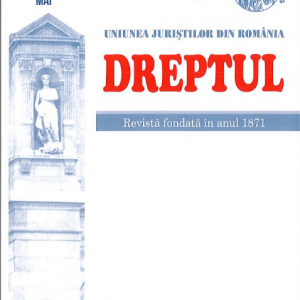 Government Emergency Ordinance No. 71/2009, serially amended and supplemented by Government Emergency Ordinances Nos. 18/2010 and 45/2010 established that Court decisions that became enforceable until December 31, 2009 and that concern salary rights to the benefit of the personnel from the budgetary sector shall be paid by budgetary authorities and institutions as follows: 34% in 2012; 33% in 2013; 33% in 2014, of the value of the enforceable title. The author considers that Government Emergency Ordinance No. 71/2009 (as amended and supplemented) does not infringe Protocol No. 1 to the European Convention on Human Rights and Fundamental Freedoms, as well as the applicable jurisprudence of the European Court of Human Rights.
Government Emergency Ordinance No. 71/2009, serially amended and supplemented by Government Emergency Ordinances Nos. 18/2010 and 45/2010 established that Court decisions that became enforceable until December 31, 2009 and that concern salary rights to the benefit of the personnel from the budgetary sector shall be paid by budgetary authorities and institutions as follows: 34% in 2012; 33% in 2013; 33% in 2014, of the value of the enforceable title. The author considers that Government Emergency Ordinance No. 71/2009 (as amended and supplemented) does not infringe Protocol No. 1 to the European Convention on Human Rights and Fundamental Freedoms, as well as the applicable jurisprudence of the European Court of Human Rights. -
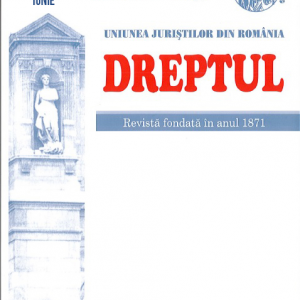 In this study there are analyzed, in particular: – The influence of the European Court of Human Rights on the international movement of foreign judgments; – The enforcement of foreign judgments according to the new Romanian Civil Procedure Code; – The enforcement of judgments pronounced in a Member State of the European Union.
In this study there are analyzed, in particular: – The influence of the European Court of Human Rights on the international movement of foreign judgments; – The enforcement of foreign judgments according to the new Romanian Civil Procedure Code; – The enforcement of judgments pronounced in a Member State of the European Union. -
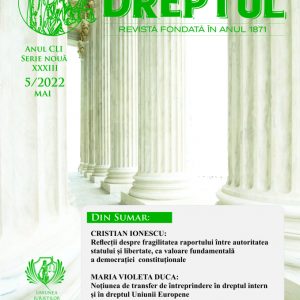 How firm the authority of the state should be and how wide the margin of freedom of the citizens of a state should be are questions without a convenient answer for either the state, or for the citizen. This is a truth that can be insisted upon for a long time, but without satisfactory results. The citizen has always demanded from the public power a sphere of his freedom as wide as possible and the public power has been and is, in principle, ready to retain an extra authority over the citizen. The author aims in this study to show that both the authority of the state and the vocation of freedom of the citizen must slide between reasonable and legitimate limits, so that the state can exercise its role and social functions established through constitutional norm and put in the service of the common good of the society and that the citizen can enjoy, without any illegitimate restraints or restrictions, a freedom (recognized and guaranteed by the state), which allows him to develop his personality and dignity as a human being, in the general interpersonal relations and in its relations with the state, in a determined social-historical, economic, political, cultural, religious context, etc. The author also shows that the relationship between authority and freedom is in its essence a fragile one, in which the state may have, in certain political circumstances or of other nature, leviathan temptations, with oppressive effects on the constitutional freedoms, a position from which it reproduces tools of force in ever new forms and it restricts the exercise of the citizens’ rights. The author draws attention to a serious social danger that threatens the foundations of a democratic government: the excess of authority and its repeated, illegitimate and unjustified use can be premises of the establishment of an authoritarian regime, in front of which the citizen is powerless. The excess of authority and the unlawful violation of public liberties call into question the democratic character of the state. In its turn and also in certain given political or social circumstances, the associated citizen or citizens may be tempted to resort to extreme forms of manifestation, claiming a higher degree of individual or collective freedom, to the detriment of the original authority of public power.
How firm the authority of the state should be and how wide the margin of freedom of the citizens of a state should be are questions without a convenient answer for either the state, or for the citizen. This is a truth that can be insisted upon for a long time, but without satisfactory results. The citizen has always demanded from the public power a sphere of his freedom as wide as possible and the public power has been and is, in principle, ready to retain an extra authority over the citizen. The author aims in this study to show that both the authority of the state and the vocation of freedom of the citizen must slide between reasonable and legitimate limits, so that the state can exercise its role and social functions established through constitutional norm and put in the service of the common good of the society and that the citizen can enjoy, without any illegitimate restraints or restrictions, a freedom (recognized and guaranteed by the state), which allows him to develop his personality and dignity as a human being, in the general interpersonal relations and in its relations with the state, in a determined social-historical, economic, political, cultural, religious context, etc. The author also shows that the relationship between authority and freedom is in its essence a fragile one, in which the state may have, in certain political circumstances or of other nature, leviathan temptations, with oppressive effects on the constitutional freedoms, a position from which it reproduces tools of force in ever new forms and it restricts the exercise of the citizens’ rights. The author draws attention to a serious social danger that threatens the foundations of a democratic government: the excess of authority and its repeated, illegitimate and unjustified use can be premises of the establishment of an authoritarian regime, in front of which the citizen is powerless. The excess of authority and the unlawful violation of public liberties call into question the democratic character of the state. In its turn and also in certain given political or social circumstances, the associated citizen or citizens may be tempted to resort to extreme forms of manifestation, claiming a higher degree of individual or collective freedom, to the detriment of the original authority of public power. -
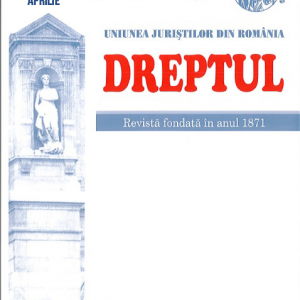 The entry into force since January 1st 2011 of the Framework Law no. 284/2010 on uniform remuneration of staff paid from public funds and of Law no. 285/2010 on remuneration in 2011 of staff paid from public funds brings again to the fore the thorny issue of staff remuneration in the public sector. Fructifying the experience gained in 2010 through the implementation of the Framework Law no. 330/2009, now repealed, the aforesaid enactments regulate principles on remuneration, pay system, base rates’ setting and differentiation (pays, wages in terms of position and monthly allowances according to employment), benefits, bonuses, allowances, compensations and premiums that the public sector staff shall capitalize on, as well as legal liability and proceedings in disputes’ settlement. In this context, essential are also milestones set by the Constitutional Court via resolutions passed on issues of principle on the possible intervention by the legislator in matters of staff remuneration in the public sector.
The entry into force since January 1st 2011 of the Framework Law no. 284/2010 on uniform remuneration of staff paid from public funds and of Law no. 285/2010 on remuneration in 2011 of staff paid from public funds brings again to the fore the thorny issue of staff remuneration in the public sector. Fructifying the experience gained in 2010 through the implementation of the Framework Law no. 330/2009, now repealed, the aforesaid enactments regulate principles on remuneration, pay system, base rates’ setting and differentiation (pays, wages in terms of position and monthly allowances according to employment), benefits, bonuses, allowances, compensations and premiums that the public sector staff shall capitalize on, as well as legal liability and proceedings in disputes’ settlement. In this context, essential are also milestones set by the Constitutional Court via resolutions passed on issues of principle on the possible intervention by the legislator in matters of staff remuneration in the public sector. -
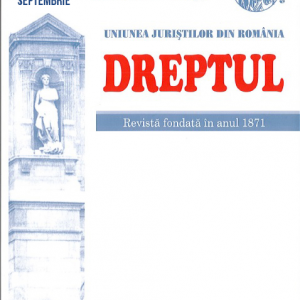 Dignity of human being is one of the most obvious and complex notions which lawyers had to study thoroughly in the last years. The complexity of dignity arises from its almost non-legal nature: dignity is a fundamental attribute of the human being or a postulate of civilization of which law should take note. It can not be conceived that dignity can be denied or that legal order ignore it. As an expression of human value, dignity tends to be confused with the notion of humanity. The presence of a principle of dignity in our legal order is undeniable; but respect for a person’s dignity can also reveal itself as a subjective right, as shown in Article 72 (1) of the Civil Code. Having in view the uncertainties arisen in the debates around dignity, the authors’ approach is an attempt to reflect, on the one hand, on the conceptual notion of dignity by the analysis of the object and of the legal nature of dignity and, on the other hand, on the functional point of view which allows to determine what dignity serves for; in other words, the functions of dignity and its practical applications. The regulation of the right to dignity in the Civil Code should be regarded as a timely novelty.
Dignity of human being is one of the most obvious and complex notions which lawyers had to study thoroughly in the last years. The complexity of dignity arises from its almost non-legal nature: dignity is a fundamental attribute of the human being or a postulate of civilization of which law should take note. It can not be conceived that dignity can be denied or that legal order ignore it. As an expression of human value, dignity tends to be confused with the notion of humanity. The presence of a principle of dignity in our legal order is undeniable; but respect for a person’s dignity can also reveal itself as a subjective right, as shown in Article 72 (1) of the Civil Code. Having in view the uncertainties arisen in the debates around dignity, the authors’ approach is an attempt to reflect, on the one hand, on the conceptual notion of dignity by the analysis of the object and of the legal nature of dignity and, on the other hand, on the functional point of view which allows to determine what dignity serves for; in other words, the functions of dignity and its practical applications. The regulation of the right to dignity in the Civil Code should be regarded as a timely novelty. -
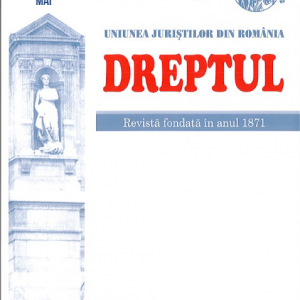 What seems relevant to this study highlight is the current trend of Europeanization guarantees the right to a fair trial in civil matters established by art. 6, paragraph 1 of the Convention for the Protection of Human Rights and Fundamental Freedoms and relativization constitutional provisions to guarantee this right, from the perspective of European Court of Human Rights. With this approach, the study proposed open a complex and complete vision, but not exhaustive approach guarantees within the current right to a fair trial in civil matters. Following an outline Key – are analyzed successively three major parts of the study, namely, 1. Identification of universal standards and regulations contained in the European human rights and, of Romanian constitutional and legal regulations on the right to a fair trial in civil matters. 2. Doctrinal guidelines on the requirements of the right to a fair trial in civil matters. 3. Jurisprudential guidelines on the requirements of the right to a fair trial in civil matters.
What seems relevant to this study highlight is the current trend of Europeanization guarantees the right to a fair trial in civil matters established by art. 6, paragraph 1 of the Convention for the Protection of Human Rights and Fundamental Freedoms and relativization constitutional provisions to guarantee this right, from the perspective of European Court of Human Rights. With this approach, the study proposed open a complex and complete vision, but not exhaustive approach guarantees within the current right to a fair trial in civil matters. Following an outline Key – are analyzed successively three major parts of the study, namely, 1. Identification of universal standards and regulations contained in the European human rights and, of Romanian constitutional and legal regulations on the right to a fair trial in civil matters. 2. Doctrinal guidelines on the requirements of the right to a fair trial in civil matters. 3. Jurisprudential guidelines on the requirements of the right to a fair trial in civil matters. -
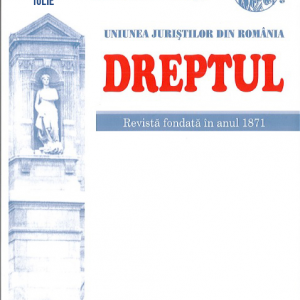 Recently (re)invented (2005) by the Italian and North American law schools, quickly developed and initially submitted as a „science a little bizarre” (J.-B. Auby, 2007), the global administrative law is one of the legal results of the phenomenon of globalization. Introducing an increasing porosity of the borders, and also a considerable development of the functions of the non-state actors, increasingly diverse and numerous, globalization creates new phenomena of adjustment, involved in the development of transparency and that contribute to the accountability of each intervener on the supranational stage. This is the background of the emergence of a global administrative law, based on a new and systematic analysis of the supra- and trans- national phenomena, mostly heteroclite in appearance. In only a decade, around these precepts, an authentic school of thought has been crystallized, developed especially in common law doctrine, less exploited in French doctrine, and its presence finding its beginning in the Romanian doctrine by this study.
Recently (re)invented (2005) by the Italian and North American law schools, quickly developed and initially submitted as a „science a little bizarre” (J.-B. Auby, 2007), the global administrative law is one of the legal results of the phenomenon of globalization. Introducing an increasing porosity of the borders, and also a considerable development of the functions of the non-state actors, increasingly diverse and numerous, globalization creates new phenomena of adjustment, involved in the development of transparency and that contribute to the accountability of each intervener on the supranational stage. This is the background of the emergence of a global administrative law, based on a new and systematic analysis of the supra- and trans- national phenomena, mostly heteroclite in appearance. In only a decade, around these precepts, an authentic school of thought has been crystallized, developed especially in common law doctrine, less exploited in French doctrine, and its presence finding its beginning in the Romanian doctrine by this study. -
 In this study the author develops and substantiates the thesis according to which under reign of King Carol I (1866-1914), despite the clear purports of the Romanian Constitution of 1866 (inspired by the Belgian Constitution of 1831), in reality, illa tempore, there was no real democracy in Romania, a real representative government, but political and constitutional life was dominated, de facto, by moderate monarchical authoritarianism of King Carol I, King who was concerned to impose a personal direction in domestic and foreign policy of the country, with the view to render functional mechanisms of the young Romanian state, and that even at the expense of sacrificing real democracy and the parliamentary regime, proclaimed by the Romanian Constitution of 1866.
In this study the author develops and substantiates the thesis according to which under reign of King Carol I (1866-1914), despite the clear purports of the Romanian Constitution of 1866 (inspired by the Belgian Constitution of 1831), in reality, illa tempore, there was no real democracy in Romania, a real representative government, but political and constitutional life was dominated, de facto, by moderate monarchical authoritarianism of King Carol I, King who was concerned to impose a personal direction in domestic and foreign policy of the country, with the view to render functional mechanisms of the young Romanian state, and that even at the expense of sacrificing real democracy and the parliamentary regime, proclaimed by the Romanian Constitution of 1866. -
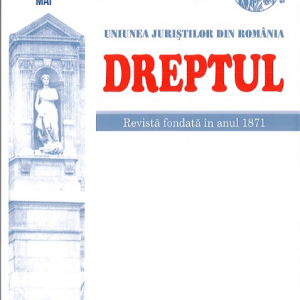 In the general context of the biodiversity preservation and of the protection of nature, an important issue shall remain that related to the animals’ rights, as a way of defense and preservation of this essential component of biodiversity. The author reveals that recognizing and guaranteeing these rights shall remain, however, a process in full development, extremely difficult and complex, which supposes to take into consideration certain different values: ethical, biological, environmentally friendly, legal, and so on. Its current stage of development is the result of certain overlong evolutions, is characterized by certain aspects and expresses a series of trends of future developments. However, the continuous and most of the times improvised adjustments and readjustments feed the legislative chaos and implicitly, a contradictory case law in the matter.
In the general context of the biodiversity preservation and of the protection of nature, an important issue shall remain that related to the animals’ rights, as a way of defense and preservation of this essential component of biodiversity. The author reveals that recognizing and guaranteeing these rights shall remain, however, a process in full development, extremely difficult and complex, which supposes to take into consideration certain different values: ethical, biological, environmentally friendly, legal, and so on. Its current stage of development is the result of certain overlong evolutions, is characterized by certain aspects and expresses a series of trends of future developments. However, the continuous and most of the times improvised adjustments and readjustments feed the legislative chaos and implicitly, a contradictory case law in the matter. -
 As compared to the former civil enactment which established a special immovable property privilege of architects, entrepreneurs, stonemen and other workers employed to build, rebuild or repair edifices, canals or other works, the new Romanian Civil Code provides a legal real estate mortgage for architects and entrepreneurs who have agreed with the owner to build, rebuild or repair a building. Beyond a slight restriction of the scope of application, the Romanian legislator has opted for a simplification of the conditions of recognition of the legal guarantee, which is praiseworthy and useful for the practice. However, the lapidary drafting of the normative texts does not provide answers to all the questions that the practitioners may ask themselves. The author has attempted in this paper to provide an image as accurate as possible of these questions, with the mention that the most important is the need for a fast answer (from the legislator or from the doctrine) to the question whether this legal mortgage guarantees only the payment of some amounts of money or also of any other type of claim which could represent the price of works contract. The issue essentially and immediately affects the scope of application of the guarantee and, consequently, a solution is required in order to ensure the predictability necessary for the economic circuit.
As compared to the former civil enactment which established a special immovable property privilege of architects, entrepreneurs, stonemen and other workers employed to build, rebuild or repair edifices, canals or other works, the new Romanian Civil Code provides a legal real estate mortgage for architects and entrepreneurs who have agreed with the owner to build, rebuild or repair a building. Beyond a slight restriction of the scope of application, the Romanian legislator has opted for a simplification of the conditions of recognition of the legal guarantee, which is praiseworthy and useful for the practice. However, the lapidary drafting of the normative texts does not provide answers to all the questions that the practitioners may ask themselves. The author has attempted in this paper to provide an image as accurate as possible of these questions, with the mention that the most important is the need for a fast answer (from the legislator or from the doctrine) to the question whether this legal mortgage guarantees only the payment of some amounts of money or also of any other type of claim which could represent the price of works contract. The issue essentially and immediately affects the scope of application of the guarantee and, consequently, a solution is required in order to ensure the predictability necessary for the economic circuit. -
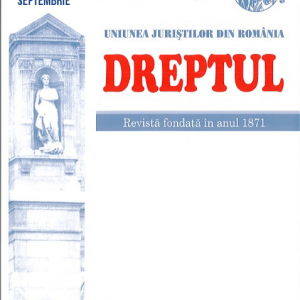 The court having territorial jurisdiction to trial the parole requests, the requests for the amendment of sentencing enforced by final judgments, the requests for interruption of the execution of prison sentence, the appeals to the execution filed by convicts in detention, as well as appeals lodged by prisoners against the hearing reports of the appointed judge for the execution of sentences, is set under the provisions of Article 449 para. (2), 450 para. (1), 456, 460 para. (1) and (6), 461 para. (2) of the Code of Criminal Procedure and Article 25 para. (6), 74 para. (5) and 77 para. (3) of Law No. 275/2006 on the execution of punishments and measures ordered by the judiciary in criminal proceedings. Sector 4 Bucharest Court, judging claims like the ones mentioned above, lodged by prisoners in the penitentiaries Bucureºti Jilava and Spital Jilava - prisons that are not located within its jurisdiction - pursuant to the Order of the Minister of Justice No. 1279/C/2000, administrative regulation not published in the “Official Gazette of Romania” and issued pursuant to a statutory provision, currently expressly repealed, breached the laws of jurisdiction, assuming a jurisdiction that, legally, falls upon other court. Also, on account of the Bucharest Court judging, in the first instance, as Court of execution, requests made by prisoners in the same prisons, after November 1st, 2011, date on which Ilfov Tribunal started to operate, had violated the legal rules governing its territorial jurisdiction.
The court having territorial jurisdiction to trial the parole requests, the requests for the amendment of sentencing enforced by final judgments, the requests for interruption of the execution of prison sentence, the appeals to the execution filed by convicts in detention, as well as appeals lodged by prisoners against the hearing reports of the appointed judge for the execution of sentences, is set under the provisions of Article 449 para. (2), 450 para. (1), 456, 460 para. (1) and (6), 461 para. (2) of the Code of Criminal Procedure and Article 25 para. (6), 74 para. (5) and 77 para. (3) of Law No. 275/2006 on the execution of punishments and measures ordered by the judiciary in criminal proceedings. Sector 4 Bucharest Court, judging claims like the ones mentioned above, lodged by prisoners in the penitentiaries Bucureºti Jilava and Spital Jilava - prisons that are not located within its jurisdiction - pursuant to the Order of the Minister of Justice No. 1279/C/2000, administrative regulation not published in the “Official Gazette of Romania” and issued pursuant to a statutory provision, currently expressly repealed, breached the laws of jurisdiction, assuming a jurisdiction that, legally, falls upon other court. Also, on account of the Bucharest Court judging, in the first instance, as Court of execution, requests made by prisoners in the same prisons, after November 1st, 2011, date on which Ilfov Tribunal started to operate, had violated the legal rules governing its territorial jurisdiction. -
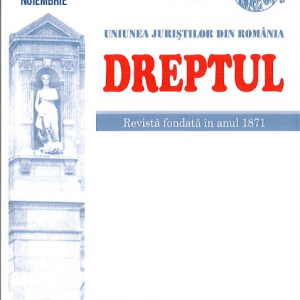 The examination of the constitutionality of the Government Emergency Ordinance no. 134/2005 has significant implications as regards the legality of the activity of one of the fundamental institutions of the State, which was established for the discovery and punishment of corruption actions. The authors intend to bring clarifications regarding this matter and the need to remove any doubts regarding the complete constitutionality of the AntiCorruption General Directorate.
The examination of the constitutionality of the Government Emergency Ordinance no. 134/2005 has significant implications as regards the legality of the activity of one of the fundamental institutions of the State, which was established for the discovery and punishment of corruption actions. The authors intend to bring clarifications regarding this matter and the need to remove any doubts regarding the complete constitutionality of the AntiCorruption General Directorate. -
 What we intended on this occasion is to discuss the rules that are used to determine in the concrete situations, related to the case, the legal inheritors of de cuius and the meanings of these rules. The topic seems interesting to us, because on the way in which it is dealt with, on the answers given to some questions, which are raised or can be raised in this regard, depend the adequate theoretical perspective and the rigor of determining of the inheritors in a given case, not only of the lawful ones, but also of the testamentary successors, each category of heirs being able, either alone or with the other, to access the inheritance.
What we intended on this occasion is to discuss the rules that are used to determine in the concrete situations, related to the case, the legal inheritors of de cuius and the meanings of these rules. The topic seems interesting to us, because on the way in which it is dealt with, on the answers given to some questions, which are raised or can be raised in this regard, depend the adequate theoretical perspective and the rigor of determining of the inheritors in a given case, not only of the lawful ones, but also of the testamentary successors, each category of heirs being able, either alone or with the other, to access the inheritance. -
 The momentary transformations taking place in the Republic of Moldova have as objective to adjust the national legislation to the international standards, in which the way of solving the co-relation between the interests of the person and the State’s interests is made at optimum level. Contradictoriality has a special importance on the whole part of the criminal procedure system, determining, in many directions, the weight of the legal status, the relations of opposition or collaboration between the participants in the criminal trial, as well as the legal relationships established between the participants in the trial and the court of law.
The momentary transformations taking place in the Republic of Moldova have as objective to adjust the national legislation to the international standards, in which the way of solving the co-relation between the interests of the person and the State’s interests is made at optimum level. Contradictoriality has a special importance on the whole part of the criminal procedure system, determining, in many directions, the weight of the legal status, the relations of opposition or collaboration between the participants in the criminal trial, as well as the legal relationships established between the participants in the trial and the court of law. -
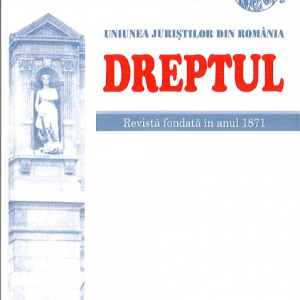 În luna martie 2010 doamna A.C.L. a achiziționat un autoturism marca Mercedes Benz 350 SL, din sumele primite donație de la părinții ei. Începând cu luna iulie a anului 20101, impozitul2 pentru mijloacele de transport3 s-a majorat semnificativ, dublându-și valoarea pentru autoturismele cu capacitate cilindrică mai mare de 3001 cm³. Autoturismul în cauză având o capacitate cilindrică de 3724 cm³, valoarea anuală a impozitului depășea 5 500 lei. Cum acesta depășea posibilitățile financiare ale doamnei A.C.L., aceasta a hotărât să înstrăineze autovehiculul, postând anunțuri pe site-urile de vânzări, precum și pe geamul lateral al autoturismului. În pofida acestor demersuri, nu a reușit să vândă autovehiculul în România din cauza cuantumului ridicat al impozitului anual, acumulând în continuare datorii la bugetul local. În cursul anului 2012 doamna A.C.L. s-a deplasat în Germania și la data de 27 noiembrie 2012 a reușit să înstrăineze autovehiculul către o societate din acest stat, al cărei obiect de activitate era comerțul cu autovehicule.
În luna martie 2010 doamna A.C.L. a achiziționat un autoturism marca Mercedes Benz 350 SL, din sumele primite donație de la părinții ei. Începând cu luna iulie a anului 20101, impozitul2 pentru mijloacele de transport3 s-a majorat semnificativ, dublându-și valoarea pentru autoturismele cu capacitate cilindrică mai mare de 3001 cm³. Autoturismul în cauză având o capacitate cilindrică de 3724 cm³, valoarea anuală a impozitului depășea 5 500 lei. Cum acesta depășea posibilitățile financiare ale doamnei A.C.L., aceasta a hotărât să înstrăineze autovehiculul, postând anunțuri pe site-urile de vânzări, precum și pe geamul lateral al autoturismului. În pofida acestor demersuri, nu a reușit să vândă autovehiculul în România din cauza cuantumului ridicat al impozitului anual, acumulând în continuare datorii la bugetul local. În cursul anului 2012 doamna A.C.L. s-a deplasat în Germania și la data de 27 noiembrie 2012 a reușit să înstrăineze autovehiculul către o societate din acest stat, al cărei obiect de activitate era comerțul cu autovehicule. -
 In this study, the author carried out an analysis of the provisions of Article 200 of the new (Romanian) Code of Civil Procedure, which thoroughly regulates the checking of the application for summons subsequent to the registration and adjustment thereof (should it not include all the necessary data).
In this study, the author carried out an analysis of the provisions of Article 200 of the new (Romanian) Code of Civil Procedure, which thoroughly regulates the checking of the application for summons subsequent to the registration and adjustment thereof (should it not include all the necessary data). -
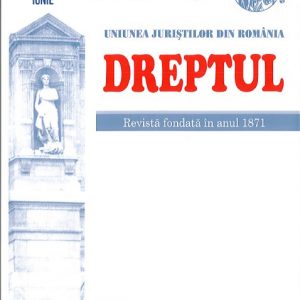 This study aims to both emphasize the specificity of employment law amidst other fields of law from Romania and also contribute to the promotion and support the thesis of its autonomy. The formula of conception and drafting of the paper privileged the development of a concrete and detailed analysis over the studies of several authors, regarding the question whether certain legal institutions, characterizing employment law, can be construed and applied in light of the contractualism principle, specific to civil law. Essentially, we argued that certain rights, belonging to workers, i.e. the rights regulated under the law and applicable collective labour agreements, are not negotiable in light of Article 38 of the Labour Code. In addition, we argued that the dismissal legal regime is imperative, thus forming part of „the public social order”, as French scholars define this concept. Consequently, this qualification impedes, from a legal standpoint, all waiver in relation to the employers’ obligations of invoking and proving the existence of a legal and valid dismissal ground.
This study aims to both emphasize the specificity of employment law amidst other fields of law from Romania and also contribute to the promotion and support the thesis of its autonomy. The formula of conception and drafting of the paper privileged the development of a concrete and detailed analysis over the studies of several authors, regarding the question whether certain legal institutions, characterizing employment law, can be construed and applied in light of the contractualism principle, specific to civil law. Essentially, we argued that certain rights, belonging to workers, i.e. the rights regulated under the law and applicable collective labour agreements, are not negotiable in light of Article 38 of the Labour Code. In addition, we argued that the dismissal legal regime is imperative, thus forming part of „the public social order”, as French scholars define this concept. Consequently, this qualification impedes, from a legal standpoint, all waiver in relation to the employers’ obligations of invoking and proving the existence of a legal and valid dismissal ground.
